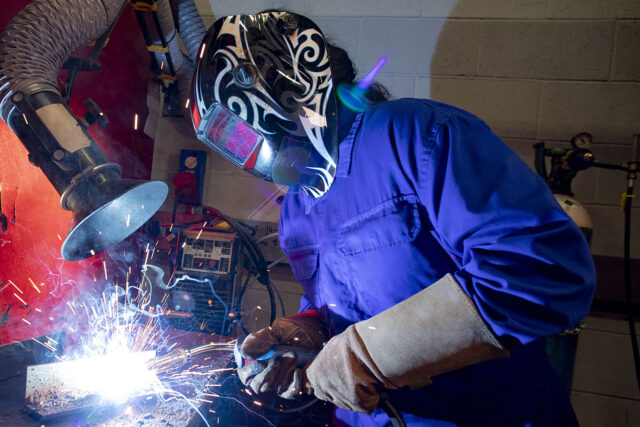Summary
The current economic crisis hit Californians with less education hard and brought greater attention to the role public workforce training can play in an equitable recovery. To support workforce needs and the economic success of residents, California invests heavily in access to education beyond high school. The state deployed between $6 and $7 billion annually to workforce education in the years leading up to the pandemic. By understanding how best to target these investments, California can build training programs that offer the greatest benefit to workers and employers.
The California community college system is the largest provider of publicly funded career education in the state. Community colleges are therefore critical for effective and equitable workforce training, even as the system has a governance and financing structure that creates challenges to connecting college programs to careers. Furthermore, we lack complete information about whether, how, and who completes job training programs in a timely manner and who then finds quality employment that offers economic mobility.
To fill in some of these gaps, we investigate the trajectories of nearly one million students who have pursued career education at California community colleges over the last decade. We also use stakeholder interviews to probe how employers and workforce intermediaries support these students in completing programs and gaining skills valued in the labor market. We find:
- The vast majority of students who pursue career education in the community colleges never earn a credential. One quarter of career education students earn a credential within six years; students who pursue health pathways are more successful—over half complete a credential within six years.
- Students who earn an initial credential, re-enroll, and complete a second one in the same field—a stackable credential path—are even more rare. About 5 percent of all career education students earn multiple credentials in the same discipline, though this includes students who earn an associate degree. Among those who first earn a certificate, the share jumps to about 25 percent.
- Students who complete credentials take about 2.5 years to do so. Even short-term certificates that require far fewer credits take students about two years; completing a stackable credential pathway takes over four years, on average.
- Black and Latino students are less likely to complete a credential, as are younger students and men. Equity gaps in completion emerge relatively early, particularly for Black and younger students.
- Students who complete at least one full-time term have much higher completion rates. These students also tend to earn credentials in a timely manner.
- Stakeholders cited challenges to partnerships with employers, including funding siloes, lack of resources, and coordination needed within individual colleges. Employer and industry partnerships with community colleges can create effective career education programs, and recent state and federal investments are supporting more strategic employer-college relationships.
After the economic disruption of COVID-19, students need better career education pathways that connect them to stable work. To better target investments around equity, the state could invest in supports that help more students access and complete career education programs—employers and colleges we interviewed cited technology, wage-replacement, and enhanced flexibility as promising areas. Furthermore, pairing supports with more flexibility—particularly for working adults—so they can take full-time course loads could go a long way to improving completion and connecting students more quickly to better jobs.
Topics
Access Completion COVID-19 Economy Equity Finance Higher Education Workforce and Training Workforce NeedsLearn More

Video: Improving Career Education Pathways into California’s Workforce

Career Pathways and Economic Mobility at California’s Community Colleges

Stackable Credentials in Career Education at California Community Colleges

Career Technical Education in California

Career Technical Education in Health: An Overview of Student Success at California’s Community Colleges

Health Training Pathways at California’s Community Colleges


